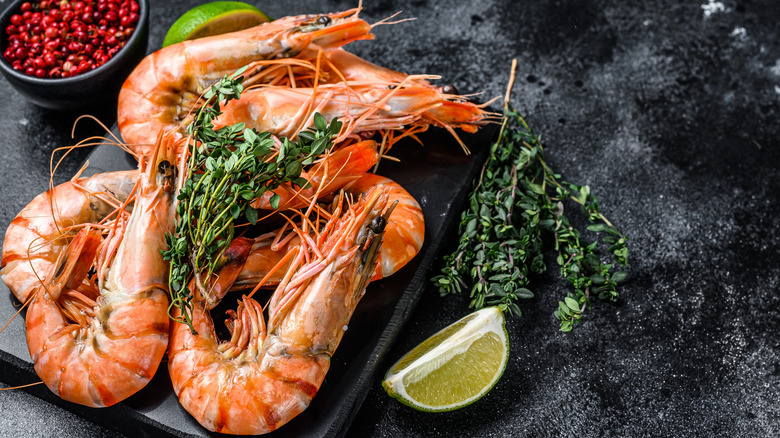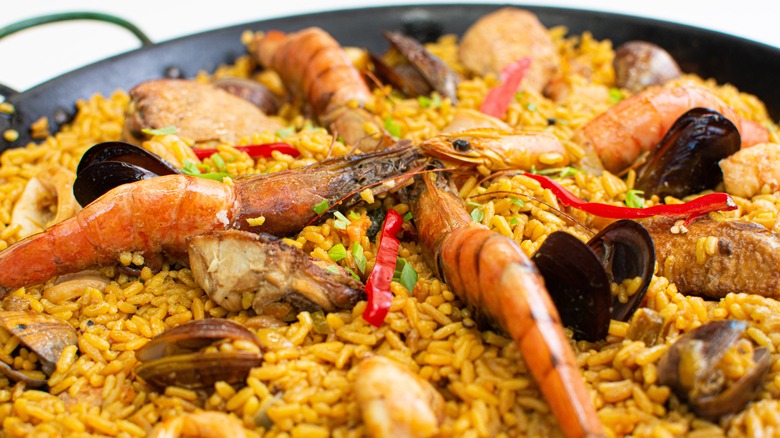Dishes You Should Be Using Shell-On Shrimp To Make
When it comes to seafood, American's like to stick with what they know. The usual suspects like salmon, cod, crab, canned tuna, tilapia, and scallops consistently make the list of Top 10 Seafoods consumed in the American market, per Seafood Source. However, there is nothing quite so popular as shrimp.
According to NOAA Fisheries, nearly all of the multimillion pounds worth of shrimp sold in the U.S. are caught in the Gulf of Mexico, as white, pink, and brown shrimp thrive in the temperate coastal waters. Across the country, these little crustaceans can be found hanging off martini glasses filled with cocktail sauce, mixed into a scampi, or skewered and grilled over a flame.
Chances are, however, that when you're out shopping for shrimp, they are missing an important part of their anatomy: their shell. Whether it's pre-cooked frozen shrimp or bagged raw shrimp, the shells are often missing. Sure it's convenient, but here's the thing, though. Shell-on shrimp are way tastier than their de-shelled brethren. According to Epicurious, hidden within a shrimp's shell is an immense store of delicious flavors naked shrimp simply cannot match. Not only are the shells edible when cooked correctly, but they impart extra umami to the meat and make for a rich seafood stock or excellent garden compost. Across numerous cultures, there are a variety of dishes where using shell-on shrimp is the only way to achieve maximum flavor.
A wide range of tasty dishes
TODAY notes that when shrimp are cooked in their shells, they become plumper, retain their shape, and, thanks to the shell trapping juices, are far less likely to come out dry and overcooked. And the juices that do escape the shell mix perfectly with the garlicky citrus of a New Orleans-style shrimp bake — the buttery sauce, infused with herbs, garlic, and lemon mixes with the juices to form a rich, mouthwatering broth.
China and Japan are also great users of shell-on shrimp. According to Epicurious, they often dredge the whole shrimp in cornstarch and salt, then deep fry them. This technique makes the shell more palatable by adding an extra-crispy texture while also locking flavor into the meat. Another dish that makes full use of the shell-on shrimp is Spain's arroz con gambas. Essentially a shrimp-only paella, this dish is a fairly simple combination of rice, whole shrimp, garlic, onions, sofrito, and broth cooked in the same large pan as it's classic seafood counterpart. The whole shrimp, with the head and shell intact, will help flavor the broth as well as keep the shrimp tender and succulent (via Market Manila).
Shell-on shrimp are in no way confined to these recipes or techniques. There are numerous other ways in which to cook them and get the same great flavor. So the next time you're at the seafood counter, buy some shrimp with the shells still on and see what you can come up with.

